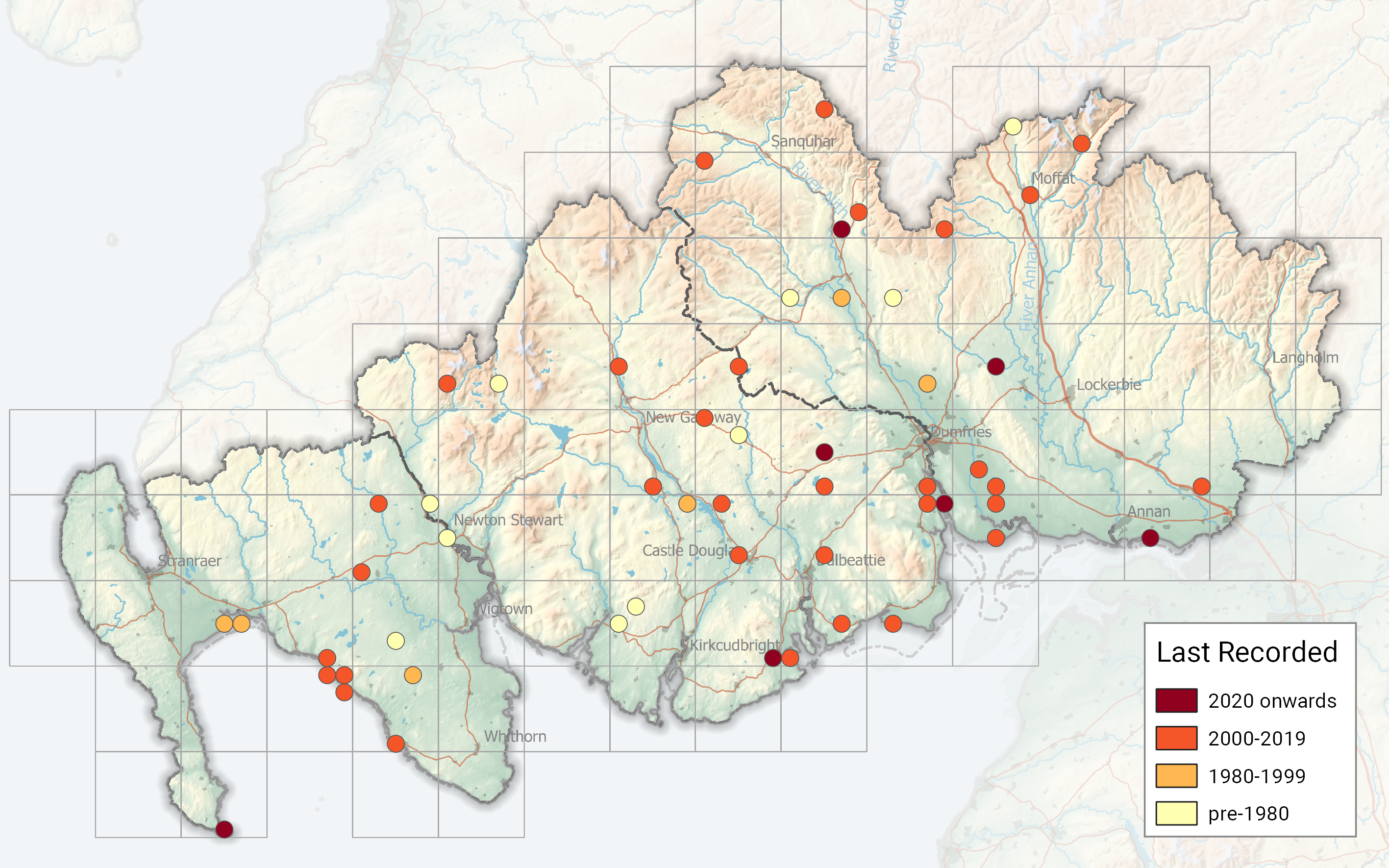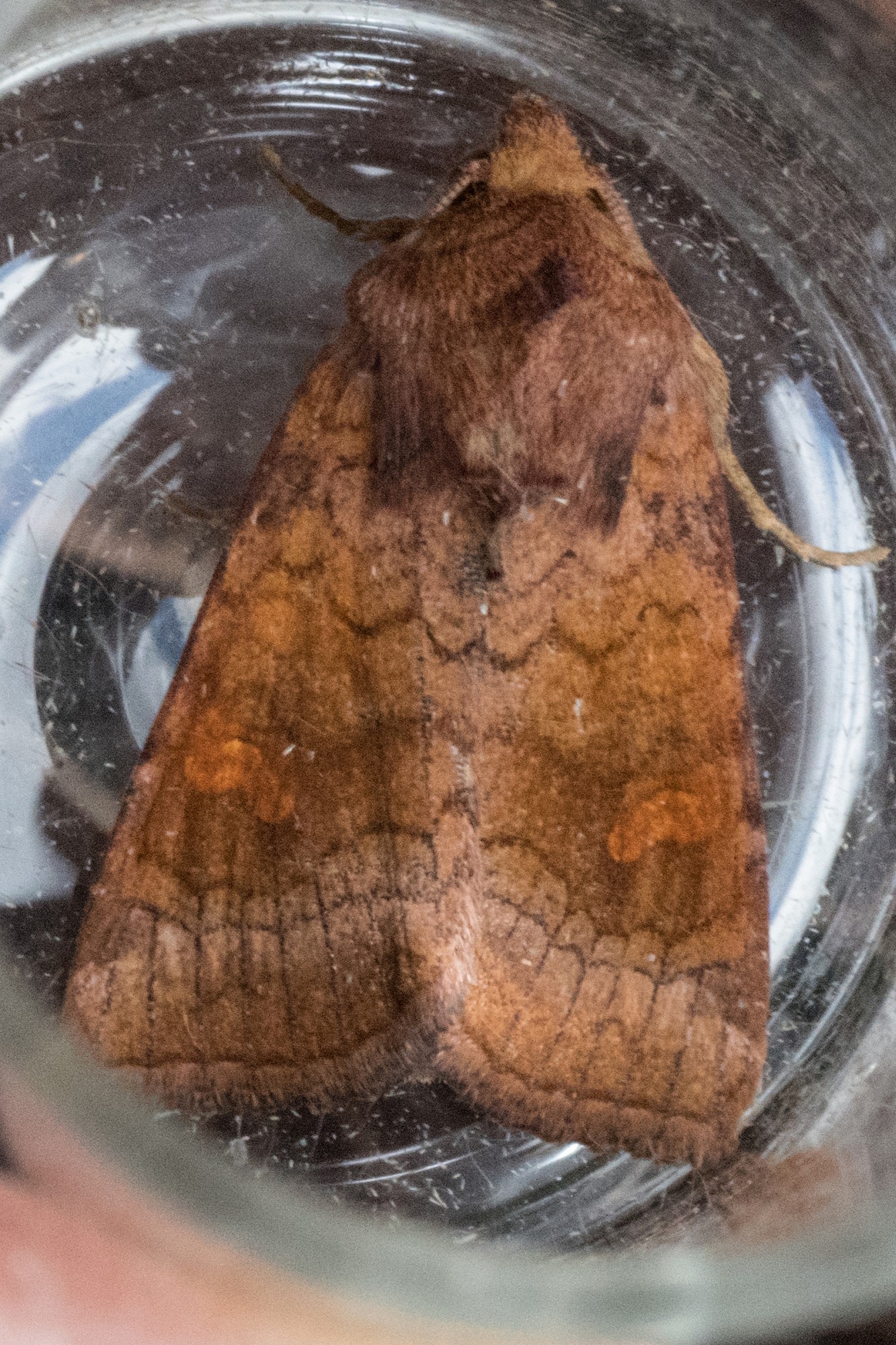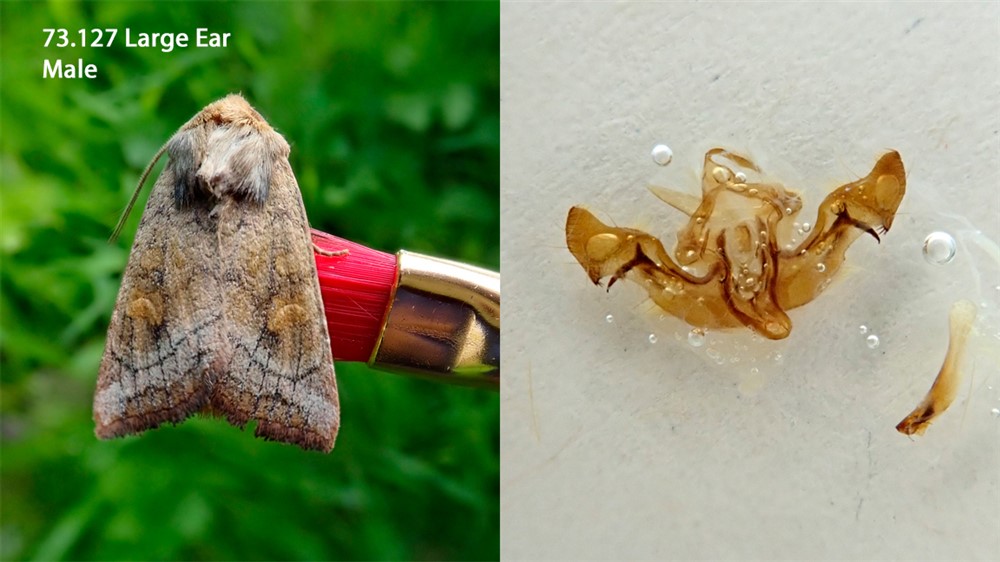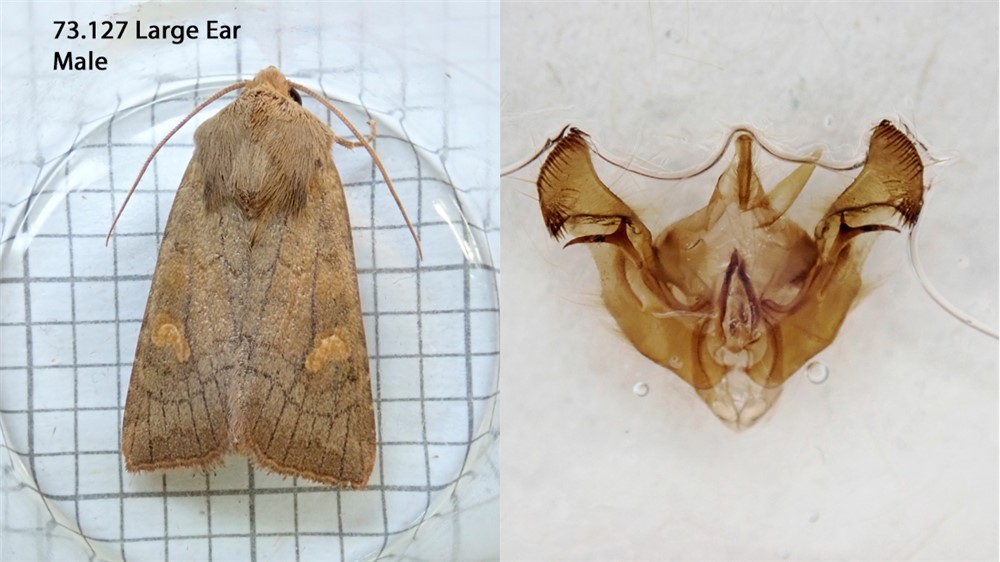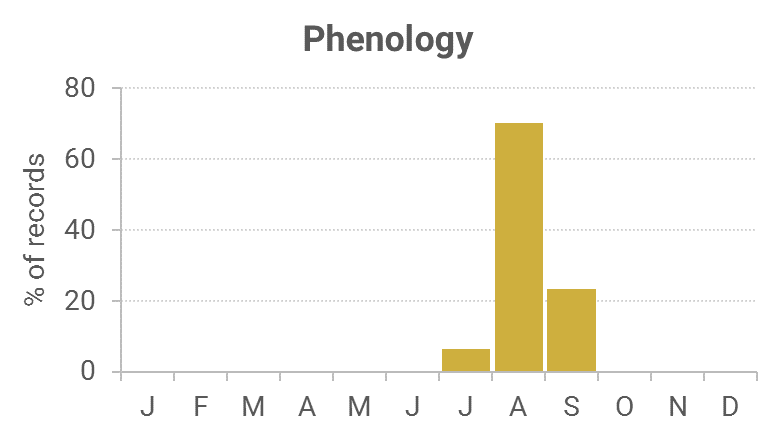Identification
The Ear moths cannot be reliably distinguished from each other by external features and species identification requires examination of the genitalia.
Record undissected specimens as Ear moth agg. (Amphipoea oculea agg.).
Recording Method.
Attracted to light, also comes to flowers.
Life cycle
One generation. Overwinters as an egg. Larvae are present May to July, with pupation in leaf litter.
Larval Foodplants
Common Cottongrass and Purple Moor-grass.
Habitat
Marshes and wet acid moorland.
History
Gordon (1913) had found this to be common in Wigtownshire. He goes on to state that the Rev. C. R. N. Burrows and Mr. F. N. Pierce regarded this as a distinct species. Earliest date was 30th July 1905.
Sir Arthur Duncan (1909-84) during his lifetime had found it at Closeburn, Tynron and Castlehill, Dumfries (all VC72). Archibald Russell (1944) listed it as occurring near Gatehouse of Fleet (VC73) during the years 1942-43.
In the early 1970s it was trapped on the Silver Flowe and verified by R. M. Palmer. Then, during 1975-82 all the Rothamsted stations apart from Caerlaverock recorded fifty records between them.
From 1981 to 2010 verified records were recorded at the following sites: Barcloy Hill, Drumglass, Kirkton, Torrs Warren, Durisdeer, Port William, Lowther Hill, Barsalloch Point, Garheugh, Carrifran Valley, Wanlock Water, Bennan in Glentrool, Mersehead RSPB, Auchencairn, Raeburn Flow and Corserig Hill, which is a wide selection from across the region.

